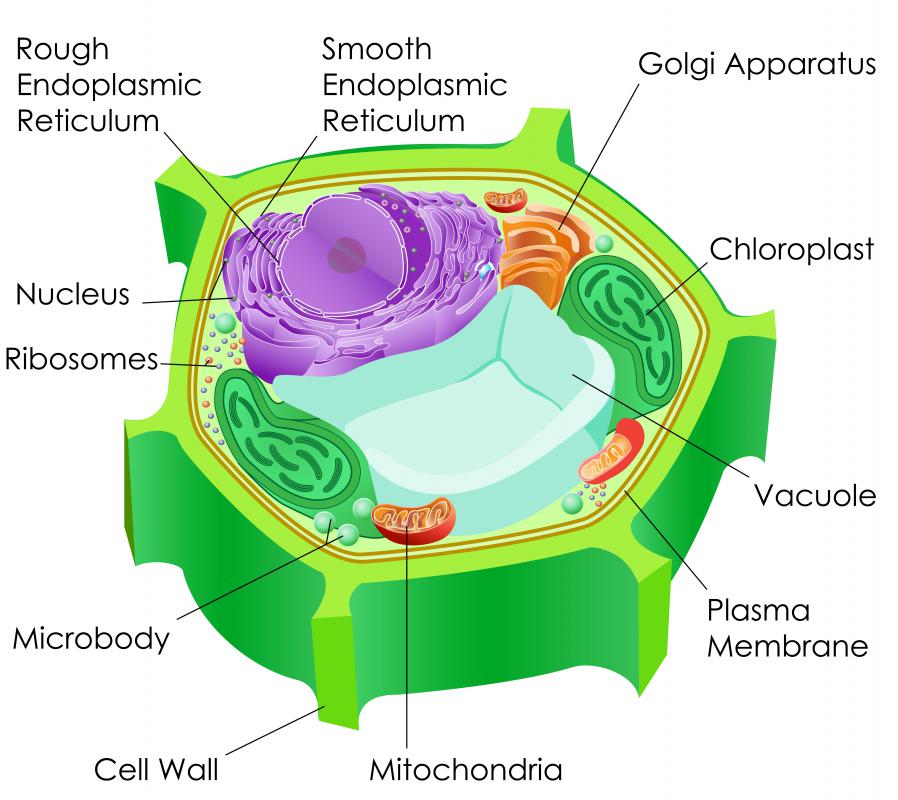At WiseGEEK, we're committed to delivering accurate, trustworthy information. Our expert-authored content is rigorously fact-checked and sourced from credible authorities. Discover how we uphold the highest standards in providing you with reliable knowledge.
What is Wheatgrass Powder?
Wheatgrass powder is a product obtained from dehydrating the extracted juice of wheatgrass and sold as a dietary supplement. For some health enthusiasts, it is valued for its nutritional benefits since it contains high levels of beta-carotene, amino acids, B vitamins, and fiber. It is also reputed to possess antibacterial and restorative properties that help to detoxify the body.
Generally, wheatgrass refers to bread wheat (Triticum aestivum), a type of grass cultivated in a greenhouse or under artificial lighting indoors. In fact, many people who hope to regularly enjoy the health benefits of wheatgrass choose to sprout it at home. After seven to ten days, the grass is processed in a small appliance to extract the juice, which is consumed for specific therapeutic purposes. Wheatgrass tablets and wheatgrass powder, on the other hand, are made from grass that has been allowed to grow naturally in the field for three months or more before it is dehydrated and consumed as a nutritional supplement.

Wheatgrass powder is taken by mixing it with water to make a nutritional drink. It can also be added to other foods. In addition to the list of nutrients preserved in the dehydrated product, the primary driver behind the health-giving properties of the powder is believed to be the concentrated chlorophyll content. One claim is that this substance promotes a plethora of biological actions ranging from increasing hemoglobin production to improving fertility and preventing hair from turning gray. In fact, these and numerous other claims were promoted for more than 30 years by author and holistic health advocate, Ann Wigmore.

However, there is a great deal of debate over whether or not wheatgrass can deliver such benefits. First, as many skeptics point out, Dr. Wigmore is a Doctor of Divinity, not a medical doctor. In fact, she was court-ordered to refrain from representing herself as a medical professional after being sued twice by the Massachusetts Attorney General — once for claiming that wheatgrass could replace insulin for diabetics and again for promoting it as a cure for AIDS. In addition, there is little, if any, evidence in the medical literature to substantiate any of the health claims made for wheatgrass products at all. Most of the limited number of studies that do exist are small, inconclusive, and date back to the 1930s.

There are several claims that can be immediately discounted, though. For instance, this powder is touted for containing high levels of chlorophyll, a carbohydrate that provides sustenance for plants. However, since human beings lack chloroplasts, they simply cannot initiate photosynthesis to convert this substance into proteins and sugars. Since the human body can’t absorb chlorophyll, it’s unlikely that it has any detoxification value.

Another claim for the powder that can be discounted is that it is a rich source of vitamin B12. First, people can’t benefit nutritionally from eating this or any other grass in the same way that a cow can, for example, due to differences in digestion. Secondly, vitamin B12 does not occur naturally in wheatgrass, but results as a byproduct of metabolism from microorganisms that reside on the surface of the plant. In fact, this very scenario is why all plants are considered inadequate sources of available vitamin B12.

Setting controversy aside, there is no evidence to suggest that supplementing with wheatgrass powder is harmful. In fact, many people report that they experience improved digestion, clearer skin, and increased energy from consuming it. In addition, wheatgrass powder is, in fact, a valid and significant source of vitamin C and iron, although not necessarily more than many other raw plants and vegetables.
AS FEATURED ON:
AS FEATURED ON:















Discussion Comments
Has the author experimented with either wheatgrass juice or the powder? Nowhere in this article, has the author spoken about personal experience. This article seems to be a research work only. Has the author ever actually used wheatgrass?
when is the appropriate time to drink wheatgrass powder? should i drink after or before eating meals?
My trigycerides are very high = 8.5. So can I drink wheatgrass powder or not?
Just a quick questions. Should I sieve the juice after having added the wheatgrass powder or do I drink even the small powder particles?
I love wheatgrass!
Wheat grass powder comes from two sources. Juice as is in the article, but the most common form is the whole wheat grass plant, dehydrated then ground into a fine powder. Juice powder has fewer nutrients higher sugars no fiber. Dehydrated powder has higher nutrition, lower sugars and about 25 percent fiber.
JM
Nutritional Powerhouse (Wheatgrass Powder)
A nutrition professor once told me that it was common for our ancient ancestors to eat up to six pounds of leaves per day. He imagined them walking along from one place to another, just picking and eating leaves as they went. Can you imagine eating a grocery bag full of greens each and every day? Few of us even eat the minimum USDA recommendations of 3 cups of dark green vegetables per week. And yet, these veggies deliver a bonanza of vitamins, minerals, and phytonutrients.
Great energizer: Drinking an ounce of wheatgrass juice is the same as consuming about two pounds of fresh vegetables and fruits as both give the same amount of vitamins and minerals.
Wonder cleanser: Wheat grass is a powerful cleanser and is known to have a detergent effect on the body’s lymphatic system. What this means is that the chlorophyll present in the juice flushes away the toxins from the body by removing them from the cells and releasing it into the bloodstream.
Smell good: The chlorophyll in the wheat grass is known to have a neutralizing effect on body odors due to bad breath, menstruation, and perspiration.
Body builder: The chemical composition of chlorophyll resembles that of hemin, a molecule found in hemoglobin, which means that wheat grass juice helps build the red blood cells and stimulates healthy tissue cell growth.
Stay slim: It is said that the nutritional value of wheat grass juice is so high that it helps repress sugar cravings thereby helping you lose weight.
Wheatgrass vs. common vegetables
Another commonly repeated claim, originally made by Schnabel in the 1940's, is that 'fifteen pounds of wheatgrass is equal in overall nutritional value to 350 pounds of ordinary garden vegetables', a ratio of 1:23. Schnabel statement doesn't specify the form of wheatgrass, however, Schnabel used dried wheatgrass for his own consumption, in his research and later in his nutritional supplements; One area in which wheatgrass is thought to be superior to other vegetables is in its content of Vitamin B12, a vital nutrient B12, it turns out, is not a vitamin contained within wheatgrass or any plant but rather a byproduct of the microorganisms living on the plant. Therefore, there are no reliable plant sources of Vitamin B12.
•100 g wheatgrass powder = 23 kg fresh vegetables
•1 tea spoon (3g) powder = 40 g fresh wheatgrass
So now bid good bye to junk food and welcome wheatgrass in your daily diet. --Dr A H Fatmi
wheatgrass powder is good for diabetics.
What r the nutritional facts of wheatgrass?
Post your comments